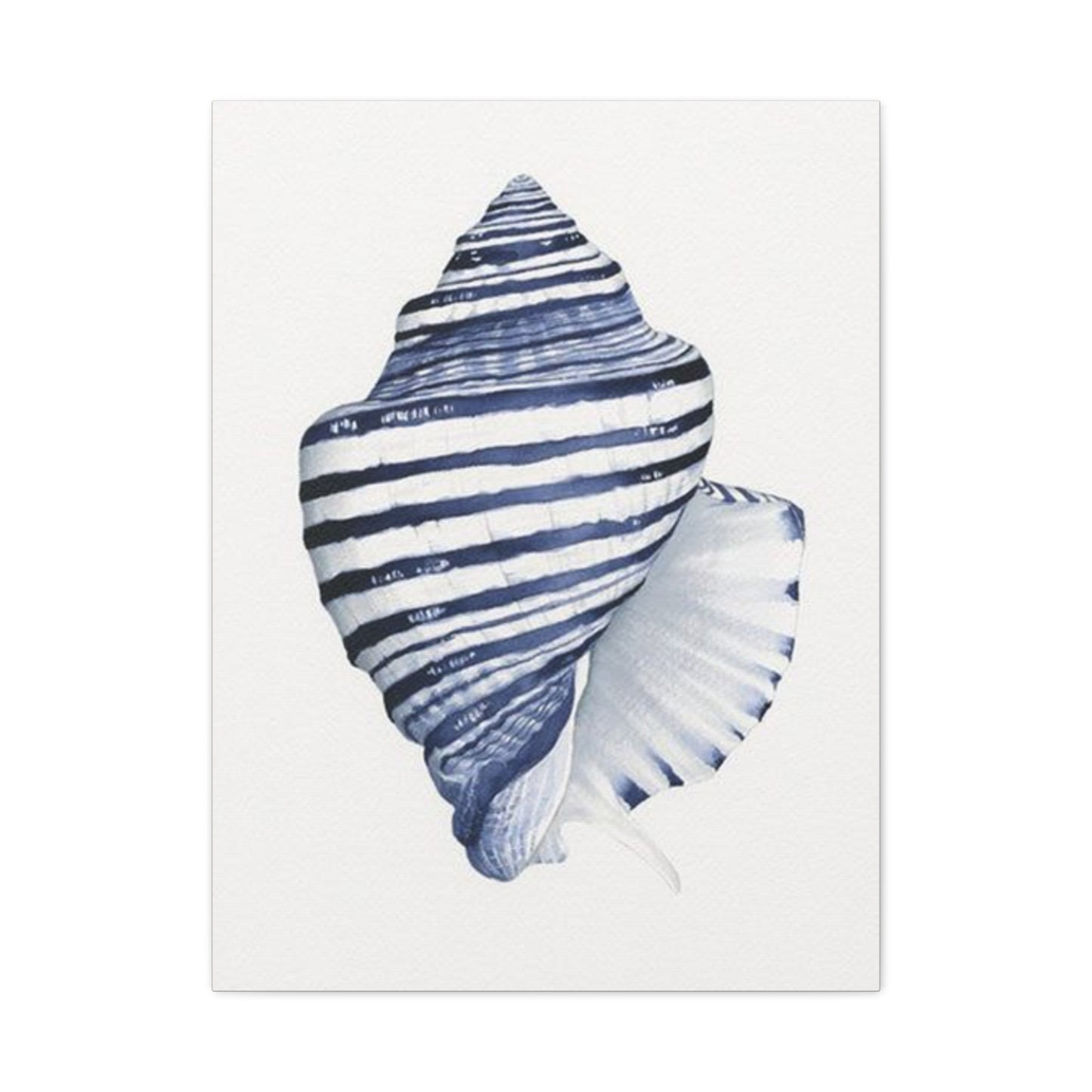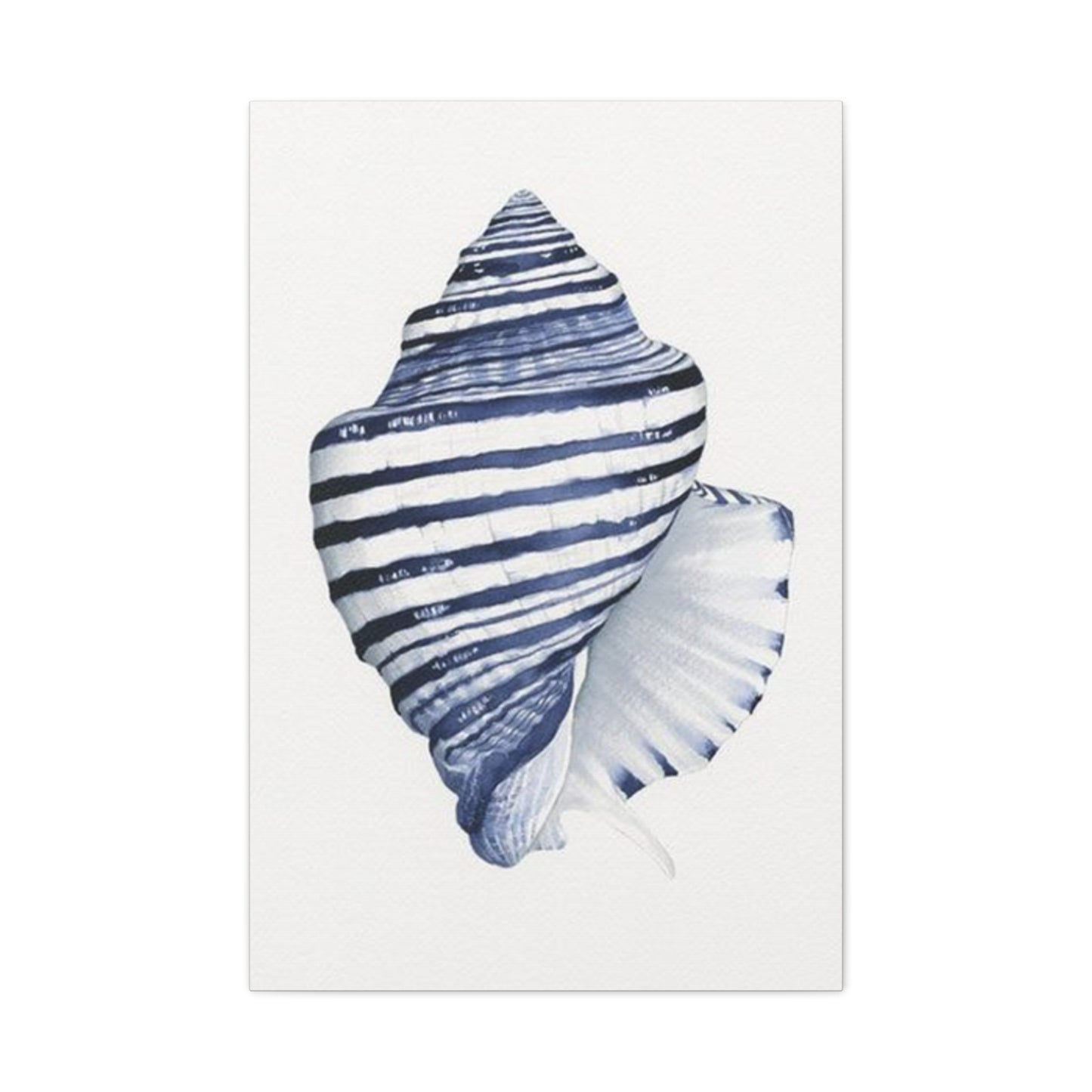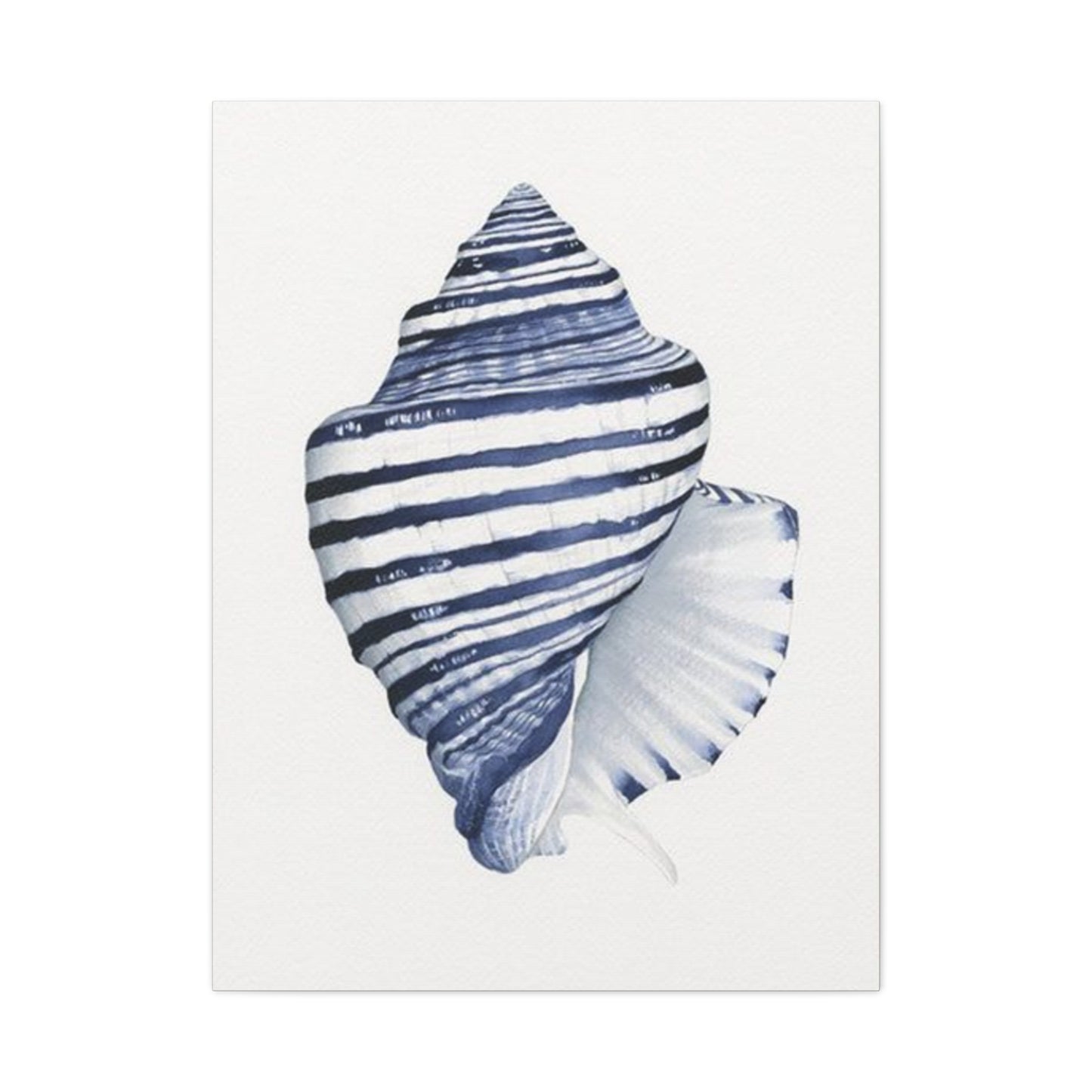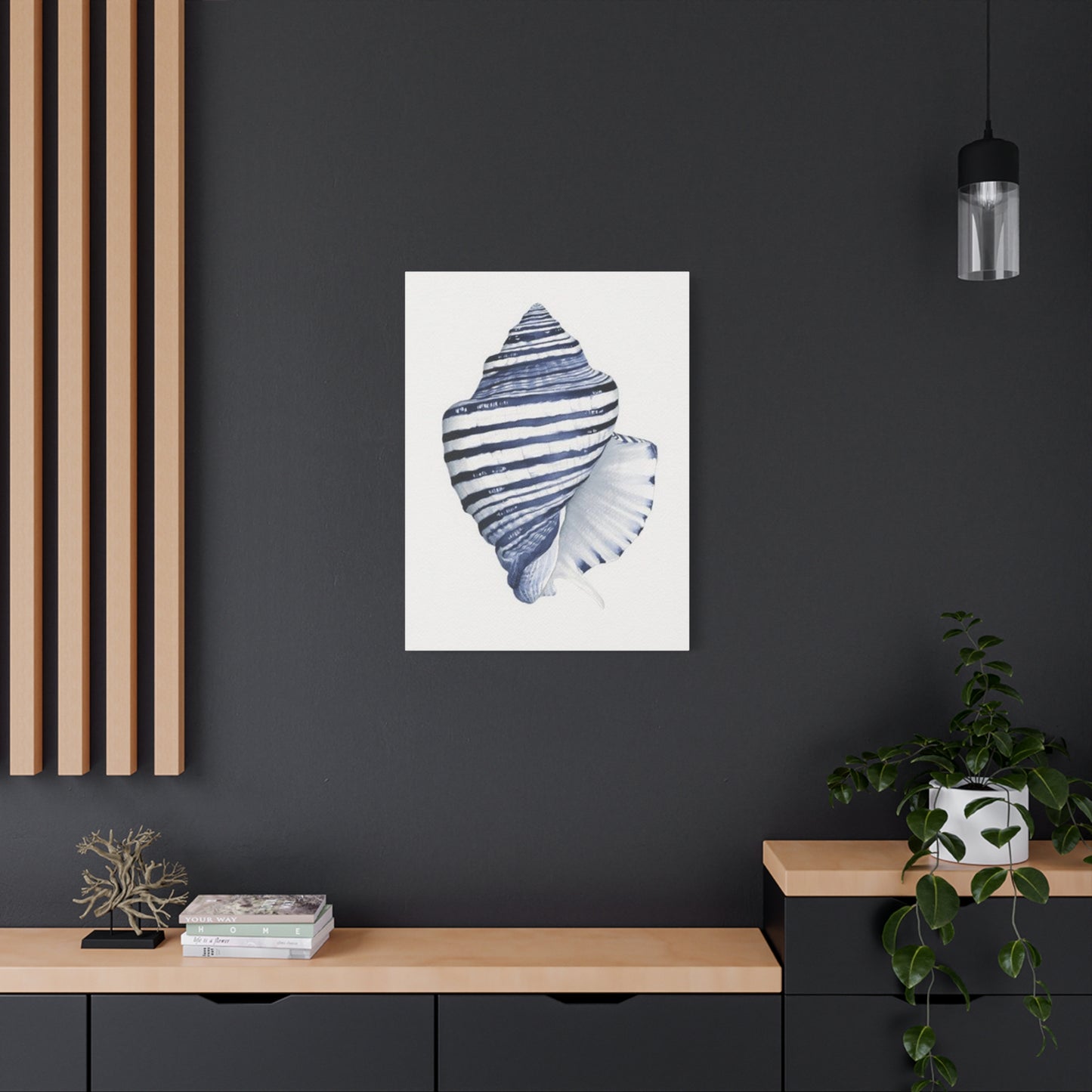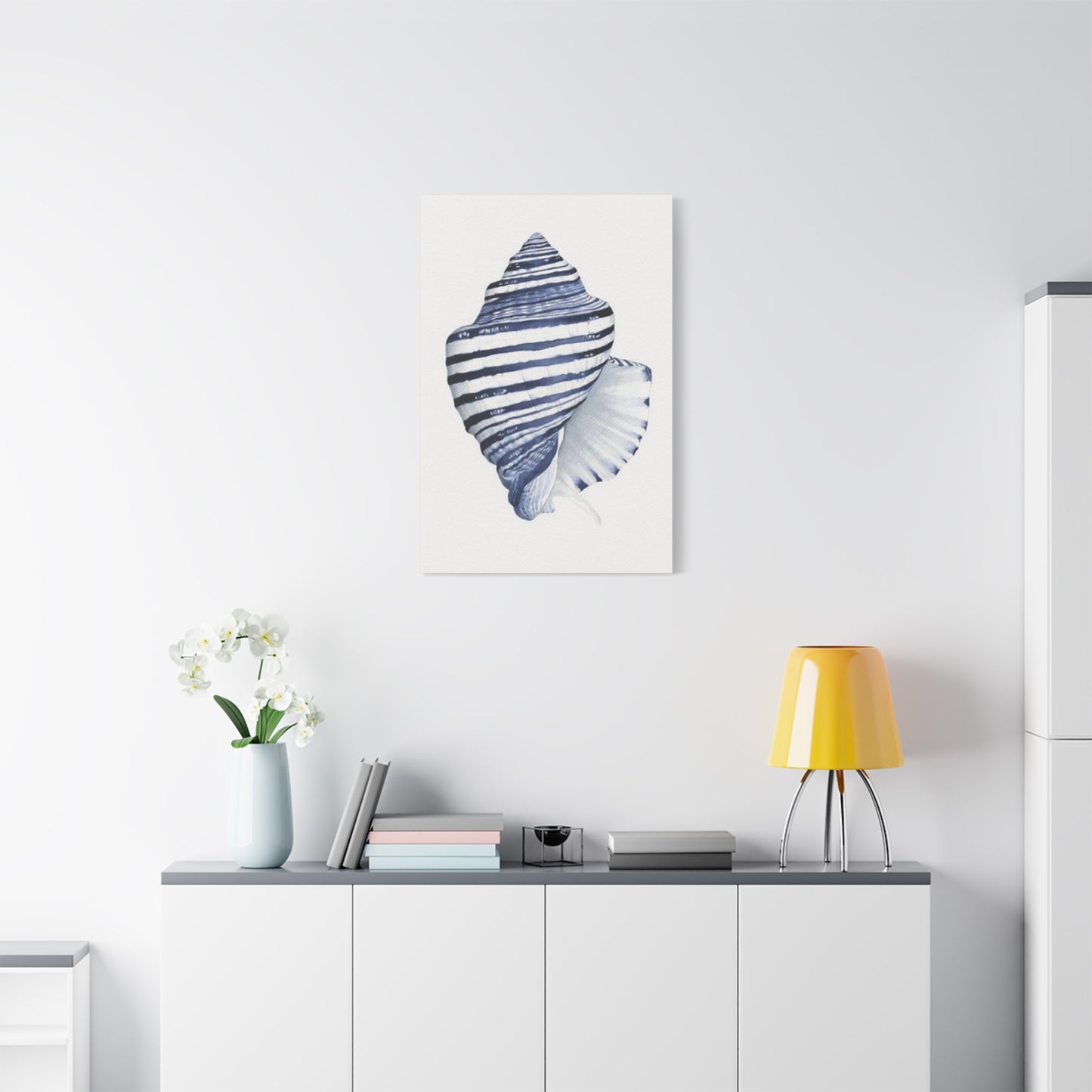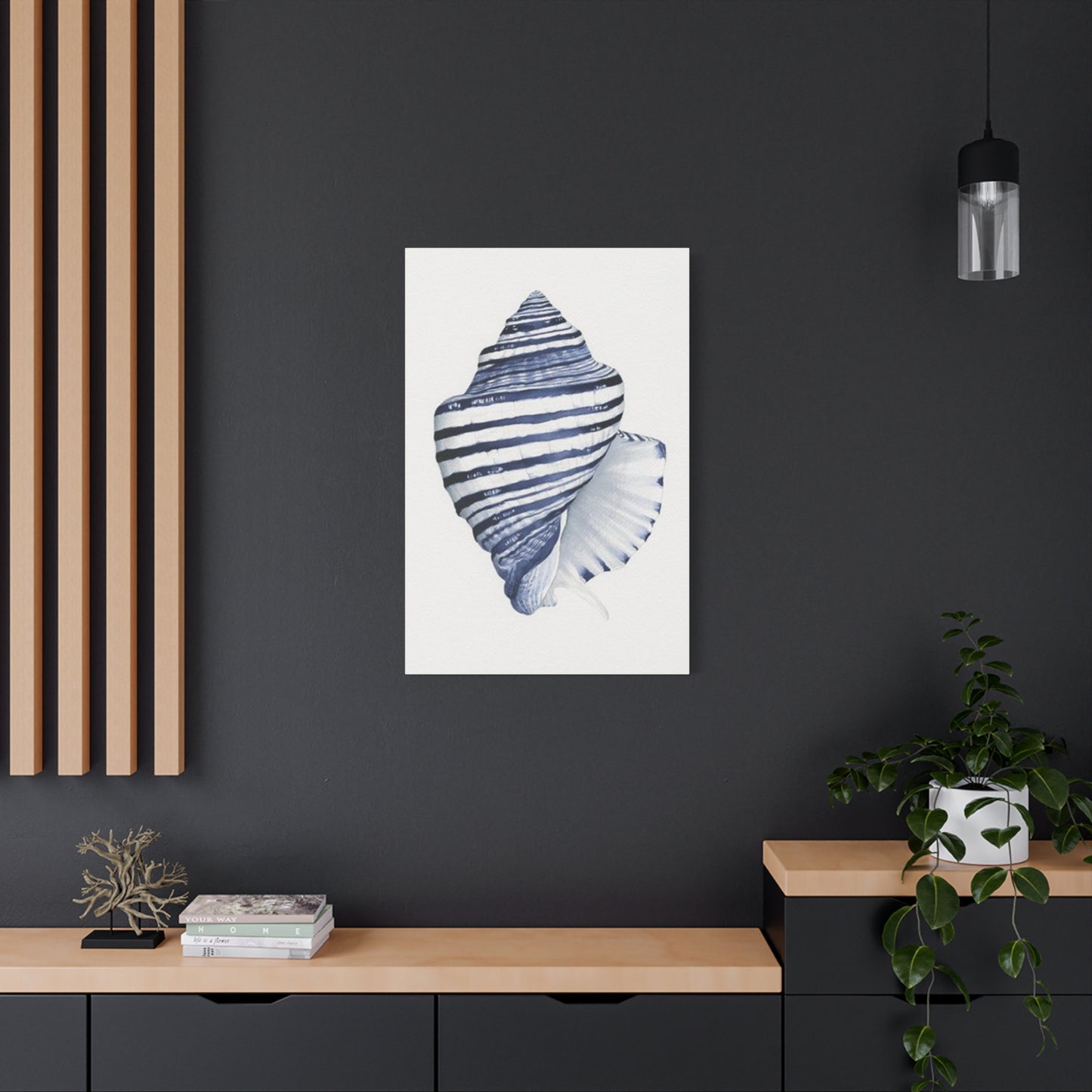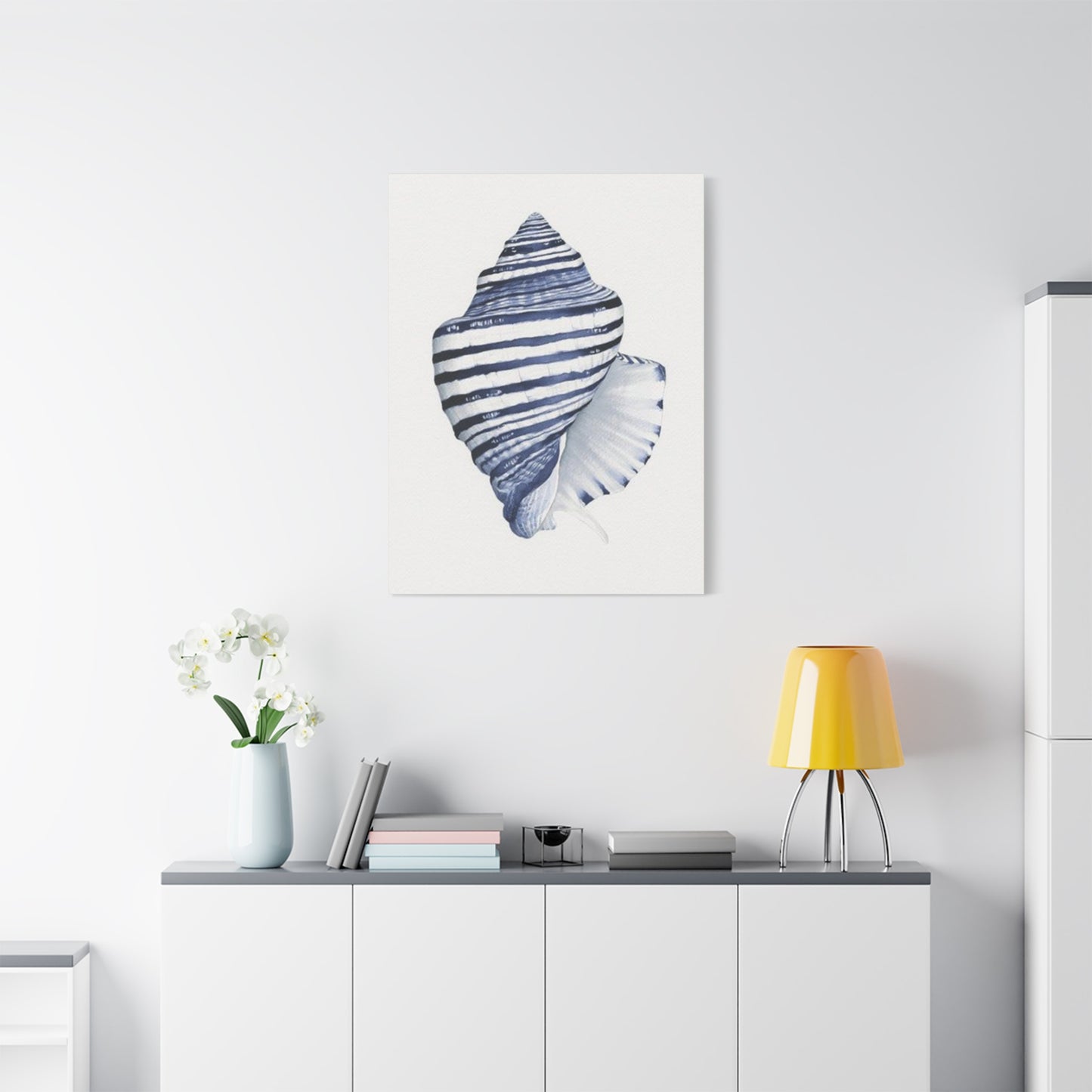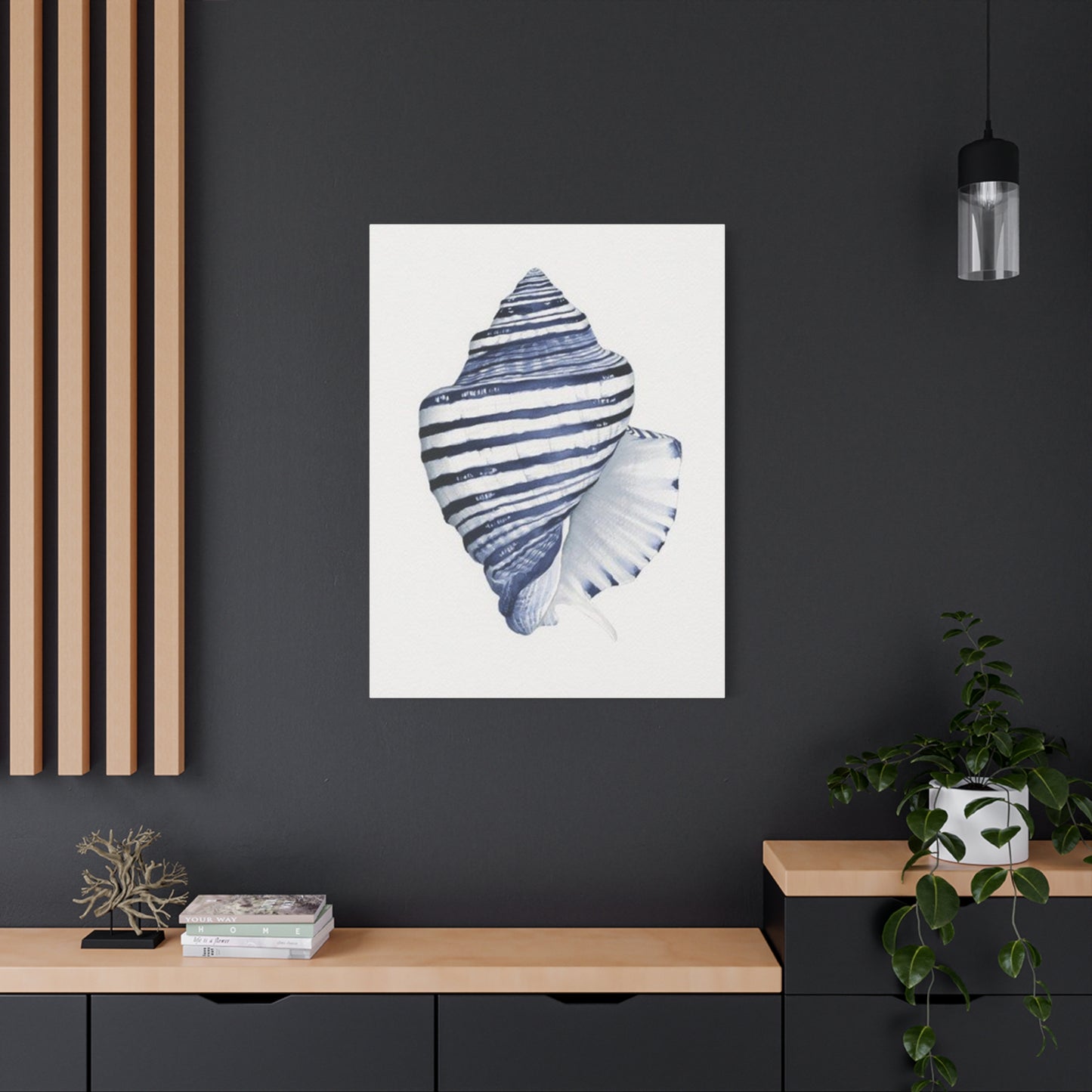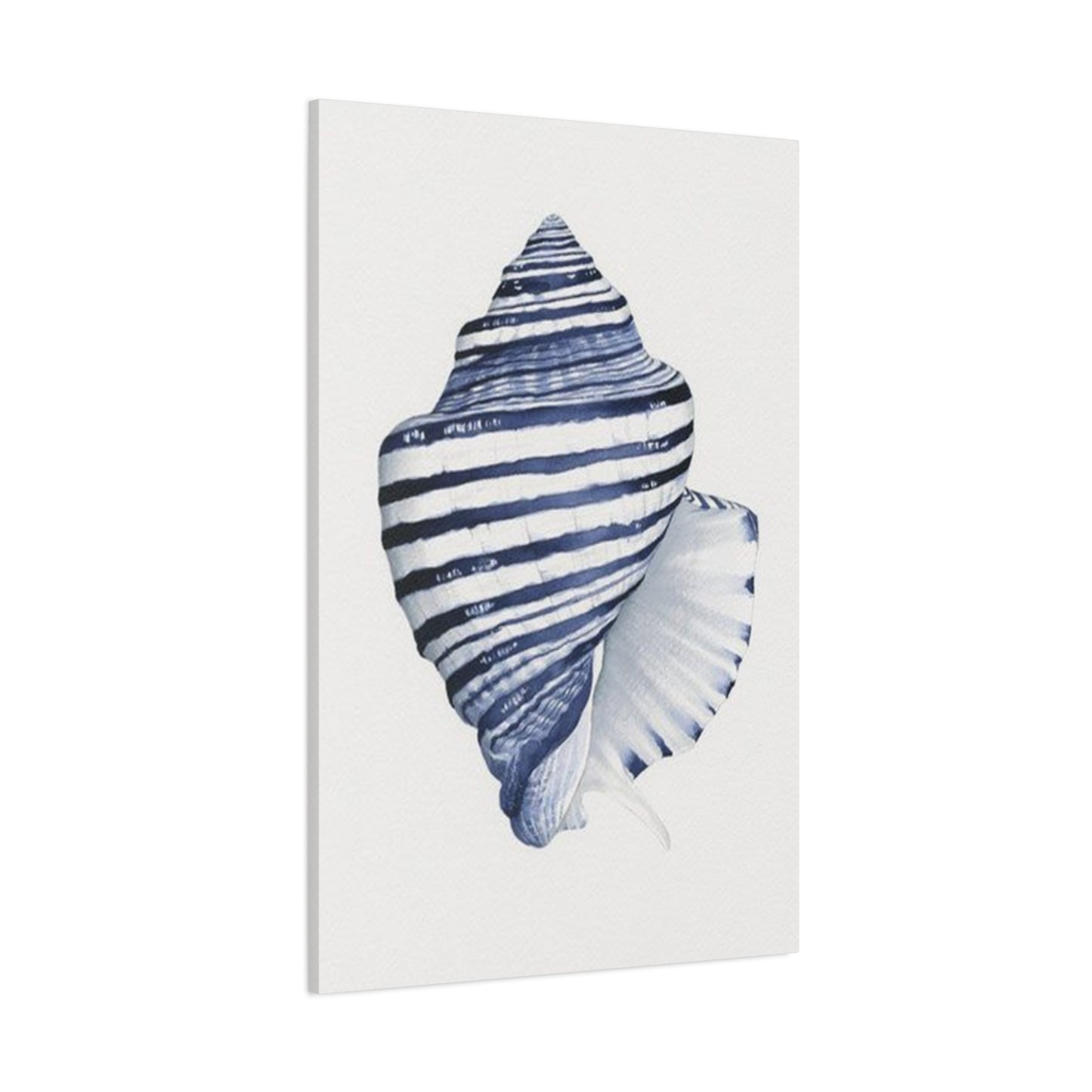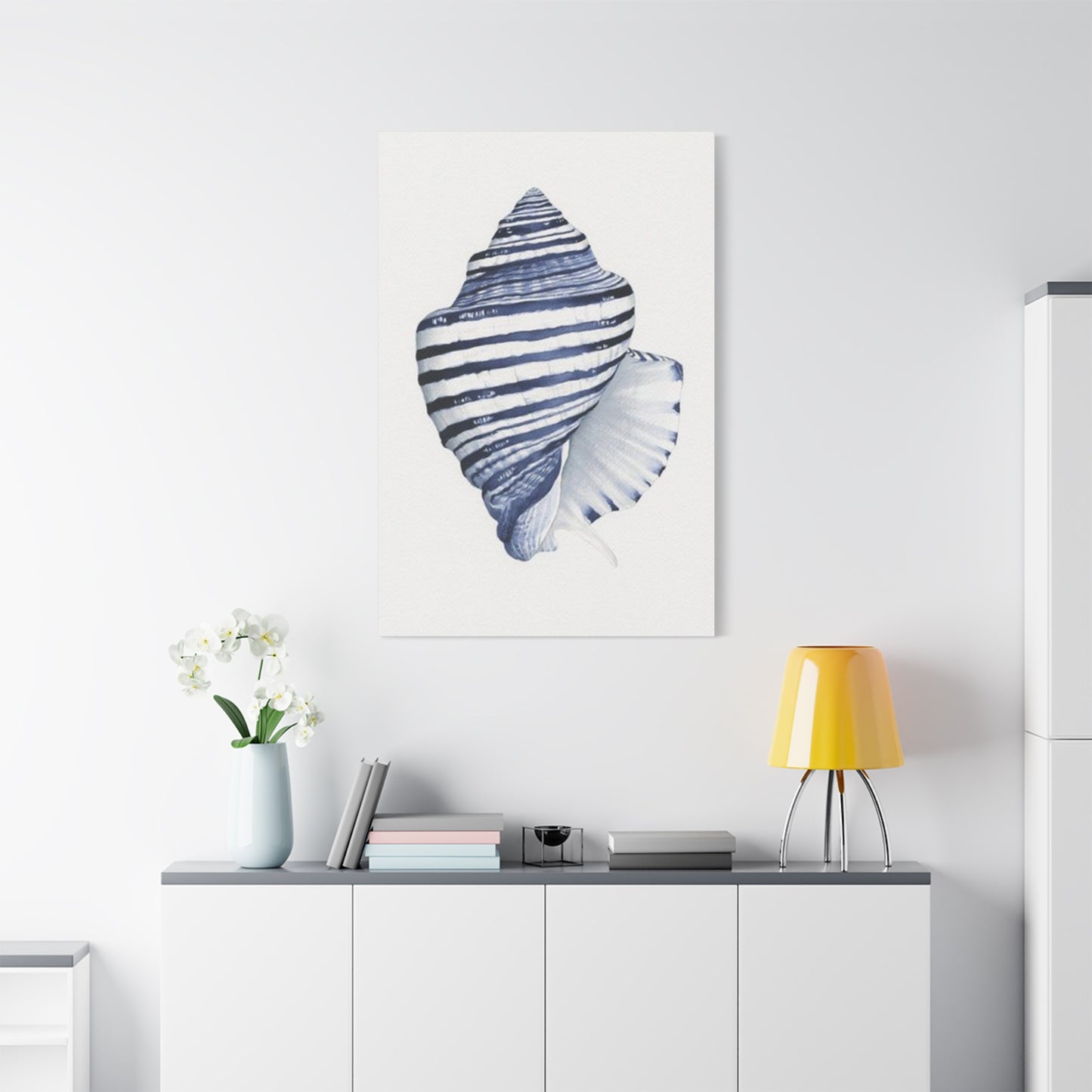Blue and White Shell Wall Art: A Timeless Path to Coastal Serenity
The timeless appeal of coastal design has captivated homeowners and interior designers for decades, with blue and white shell art emerging as a cornerstone of this beloved aesthetic. These ocean-inspired decorative elements bring the tranquil essence of seaside living into any space, creating environments that evoke the peaceful rhythm of waves and the gentle whisper of ocean breezes. From minimalist line drawings to elaborate botanical compositions, blue and white shell artwork offers versatility that complements both contemporary and traditional interior design schemes.
The growing popularity of coastal-themed decor reflects our collective desire to create spaces that promote relaxation and well-being. In our increasingly fast-paced world, the home has become a sanctuary where we seek refuge from daily stresses, and blue and white shell art serves as a visual reminder of nature's calming influence. These artistic pieces transform ordinary walls into windows to the sea, instantly transporting viewers to sun-drenched beaches and crystal-clear waters.
The Artistry Behind Blue and White Shell Compositions
The creation of blue and white shell art requires a delicate balance between scientific accuracy and artistic interpretation. Artists who specialize in this medium often spend considerable time studying actual shell specimens, understanding their intricate structures, natural patterns, and the way light plays across their surfaces. This dedication to authenticity ensures that each piece captures not just the visual appeal of shells but also their inherent beauty and complexity.
The choice of blue and white as the primary color palette is far from arbitrary. Blue, in its various shades from powder soft to deep navy, represents the ocean's depths and the sky's expansiveness. White provides contrast and purity, reminiscent of sea foam, sandy beaches, and the lustrous inner surfaces of shells themselves. Together, these colors create a harmonious blend that speaks to our primal connection with the sea.
Traditional watercolor techniques often form the foundation of blue and white shell art, allowing for the subtle gradations and transparency that make these pieces so captivating. Artists layer washes of color to build depth and dimension, creating shells that appear to glow with inner light. The interplay between pigment and water mirrors the fluid nature of the ocean itself, making each piece unique and unrepeatable.
Digital art has also found its place in the blue and white shell art movement, offering artists new tools for creating precise line work and exploring color relationships. Digital mediums allow for experimentation with different textures and effects that might be difficult to achieve with traditional materials, while still maintaining the organic feel that makes shell art so appealing.
Approaches to Shell Art Design
The minimalist movement has significantly influenced contemporary blue and white shell art, with artists embracing the principle that less is more. Minimalist shell prints focus on essential forms and clean lines, stripping away unnecessary details to reveal the pure geometry inherent in shell structures. These simplified representations often have greater visual impact than their more complex counterparts, creating focal points that draw the eye without overwhelming the space.
Line art represents perhaps the purest form of minimalist shell design. Using only simple strokes in blue ink or paint on white backgrounds, artists capture the essence of shells with remarkable economy. These pieces celebrate the natural curves and spirals found in shell architecture, translating three-dimensional forms into elegant two-dimensional compositions that feel both modern and timeless.
The beauty of minimalist blue and white shell art lies in its versatility and adaptability. These pieces work equally well in small apartments and expansive homes, complementing various design styles from Scandinavian hygge to contemporary coastal chic. Their understated elegance allows them to serve as subtle accents or commanding centerpieces, depending on size and placement within the room.
Negative space plays a crucial role in minimalist shell compositions, with artists using white backgrounds not as empty areas but as active elements that contribute to the overall design. This thoughtful use of space creates breathing room that allows the eye to rest and appreciate the delicate beauty of the shell forms without distraction.
Coastal Design Integration and Room Placement
Successfully incorporating blue and white shell art into coastal design schemes requires understanding how these pieces interact with other elements in the room. The key is creating a cohesive narrative that feels natural and unforced, avoiding the trap of over-theming that can make spaces feel like tourist shop displays rather than sophisticated living environments.
Living rooms benefit tremendously from strategically placed blue and white shell artwork, particularly when grouped in collections that tell a visual story. Large-scale pieces work well above sofas or mantels, while smaller compositions can be clustered on accent walls or in gallery arrangements. The soft blue tones complement neutral furniture and natural textures like jute, linen, and weathered wood that are staples of coastal design.
Bedrooms offer intimate settings for blue and white shell art, where these calming pieces can contribute to restful atmospheres conducive to sleep and relaxation. Placing shell artwork above headboards creates focal points that draw the eye upward, making rooms feel larger while establishing a serene mood. The gentle blue hues work particularly well in master bedrooms, where they can complement white bedding and natural wood furniture.
Bathrooms provide natural homes for shell-themed artwork, given their connection to water and cleansing rituals. Blue and white shell prints in bathrooms should be properly protected from humidity, either through appropriate framing or by choosing pieces specifically designed for high-moisture environments. The cool color palette helps create spa-like atmospheres that transform daily routines into restorative experiences.
Kitchen spaces can also benefit from blue and white shell art, particularly in homes that embrace open floor plans where visual continuity between spaces is important. Shell artwork in kitchens should complement rather than compete with backsplashes and cabinet hardware, serving as subtle nods to the coastal theme without overwhelming food preparation areas.
Botanical Elements in Shell Art Compositions
The combination of botanical elements with shell subjects creates rich, layered compositions that speak to the interconnectedness of marine and terrestrial ecosystems. Blue and white shell botanical art often incorporates seaweed, coral, sea grass, and other aquatic plants, creating comprehensive studies of coastal environments that educate while they decorate.
These botanical shell compositions require artists to understand not just the forms of individual elements but also how they relate to each other in natural settings. Successful pieces show shells nestled among fronds of seaweed or resting on beds of sea grass, creating narratives that feel authentic and scientifically sound. The addition of botanical elements also provides opportunities for introducing subtle variations in blue tones, from the deep navy of kelp to the pale aqua of shallow-water plants.
The educational value of botanical shell art makes these pieces particularly appropriate for children's rooms, home offices, and reading nooks where they can spark curiosity about marine biology and ocean conservation. Parents and educators appreciate artwork that combines aesthetic appeal with learning opportunities, making blue and white shell botanical prints valuable additions to family homes.
Contemporary artists are pushing the boundaries of traditional botanical shell art by experimenting with abstract interpretations that capture the essence of underwater gardens without adhering strictly to representational accuracy. These pieces maintain the calming blue and white color palette while offering more artistic freedom in composition and form.
Canvas and Print Production Techniques
The production of high-quality blue and white shell canvas prints requires careful attention to color reproduction and material selection. Artists and publishers must ensure that the subtle gradations and delicate hues characteristic of shell art translate accurately from original artwork to finished prints. This process often involves multiple proofing stages and careful calibration of printing equipment to achieve the desired results.
Canvas selection plays a crucial role in the final appearance of blue and white shell prints. Fine art canvases with subtle textures can enhance the organic feel of shell artwork, while smoother surfaces work better for pieces with precise line work or detailed botanical elements. The choice between cotton and linen canvases affects not only the appearance but also the longevity of prints, with linen generally offering superior archival properties for long-term display.
Giclée printing has become the gold standard for producing museum-quality blue and white shell canvas prints. This process uses archival inks and fine art papers or canvases to create reproductions that can last for generations without fading or color shifting. The investment in high-quality printing ensures that blue and white shell art retains its beauty and value over time.
Framing considerations for blue and white shell canvas prints include selecting materials that complement rather than compete with the artwork. Natural wood frames in weathered finishes work well with coastal themes, while clean white or silver frames can enhance the minimalist appeal of simpler compositions. The choice of matting, when used, should consider how it affects the overall color balance and visual impact of the piece.
Wall Decor Arrangements and Gallery Walls
Creating effective wall decor arrangements with blue and white shell art requires understanding principles of visual balance, proportion, and rhythm. Successful groupings feel intentional and cohesive while avoiding the monotony that can result from too much similarity in size, style, or subject matter. The key is finding the right balance between unity and variety within collections.
Gallery walls featuring blue and white shell art work best when they include pieces of varying sizes and orientations, creating visual interest through diversity while maintaining coherence through color palette and theme. Mixing horizontal and vertical orientations adds dynamic energy to arrangements, while consistent spacing between pieces helps unify the overall composition.
The height at which shell artwork is hung significantly affects its impact and the room's overall proportions. Standard gallery practice suggests hanging artwork so that the center falls at eye level, typically 57 to 60 inches from the floor, but this guideline may need adjustment based on ceiling height and furniture placement. In rooms with high ceilings, hanging artwork slightly higher can help fill vertical space more effectively.
Lighting plays a crucial role in showcasing blue and white shell art effectively. Natural light enhances the subtle color variations and creates interesting shadows that add depth to pieces, but direct sunlight should be avoided to prevent fading. Artificial lighting should be warm enough to maintain the inviting feel of coastal design while providing sufficient illumination to appreciate artistic details.
Ocean-Inspired Design Philosophy and Psychology
The psychological impact of ocean-inspired design elements, including blue and white shell art, extends far beyond mere aesthetic appeal. Research in environmental psychology has demonstrated that natural imagery and blue color schemes can reduce stress, lower blood pressure, and improve overall mental well-being. This scientific backing supports what many homeowners instinctively understand about the calming effects of coastal-themed decor.
The concept of biophilic design, which seeks to connect building occupants with nature, finds perfect expression in blue and white shell art. These pieces serve as nature proxies, providing psychological benefits associated with natural environments even when actual access to the ocean is limited. For urban dwellers or those living far from coastlines, shell art offers a way to maintain connection with marine environments that may hold special meaning or represent desired lifestyle aspirations.
The repetitive patterns found in many shell structures, such as the spiral of nautilus shells or the radiating ridges of scallop shells, tap into human appreciation for mathematical relationships in nature. These patterns, known as fractals, appear throughout the natural world and have been shown to have calming effects on human observers. Blue and white shell art that emphasizes these natural geometries can create meditative focal points that encourage contemplation and relaxation.
Cultural associations with shells and ocean imagery also contribute to their psychological impact. Across many cultures, shells symbolize transformation, protection, and the cycles of life, lending deeper meaning to decorative pieces that feature these natural forms. This symbolic richness adds layers of significance that enhance the emotional connection viewers feel with blue and white shell art.
Silhouette Art Techniques and Visual Impact
Silhouette art represents a sophisticated approach to blue and white shell compositions, reducing complex three-dimensional forms to their essential profiles while maintaining immediate recognizability. This technique requires artists to identify the most characteristic aspects of different shell types and capture them with remarkable economy of line and form. The resulting pieces often have greater visual impact than more detailed representations, proving that artistic restraint can be more powerful than elaborate execution.
The creation of effective shell silhouettes demands deep understanding of shell anatomy and the ability to distinguish between essential and superfluous details. Artists must identify the unique characteristics that make a conch shell instantly recognizable as distinct from a cockle or scallop, even when reduced to simple outlines. This process of distillation requires both technical skill and artistic sensitivity.
Blue and white silhouette art can range from single dramatic forms that command attention as standalone pieces to collections of multiple shell types that create engaging comparative studies. The latter approach works particularly well in educational settings or homes where residents have interests in marine biology or natural history. These collections can trace evolutionary relationships or showcase the diversity found within specific shell families.
The stark contrast inherent in silhouette art makes these pieces particularly effective in modern and contemporary interiors where clean lines and bold statements are valued. Blue silhouettes on white backgrounds create striking visual anchors that can hold their own against other strong design elements while maintaining the calming associations of coastal color palettes.
Sketch Art Styles and Hand-Drawn Aesthetics
Hand-drawn sketch aesthetics bring warmth and personality to blue and white shell art that can be difficult to achieve through other techniques. These pieces celebrate the imperfections and subtle variations that occur when human hands guide artistic tools, creating works that feel intimate and personally crafted rather than mechanically produced. The slight irregularities in line weight and the gentle wobble of hand-drawn curves add character that many viewers find more engaging than computer-perfect precision.
Sketch-style blue and white shell art often incorporates visible construction lines, cross-hatching, and other drawing techniques that reveal the artistic process. This transparency in method creates educational value, showing viewers how complex forms can be built up from simple geometric shapes and encouraging appreciation for the skill required to create convincing representations of natural objects.
The loose, spontaneous quality of sketch art makes it particularly suitable for casual living spaces where overly formal artwork might feel inappropriate. Family rooms, breakfast nooks, and children's spaces benefit from the approachable nature of sketch-style shell art, which invites closer inspection and can spark conversations about art techniques and marine life.
Watercolor sketch techniques combine the immediacy of drawing with the atmospheric qualities of paint, creating blue and white shell art that feels both finished and spontaneous. These hybrid approaches often feature loose ink outlines filled with transparent washes of blue, allowing white paper to show through and create luminous effects reminiscent of sunlight filtering through shallow water.
Elegance in Coastal Art Selection
Selecting elegant blue and white shell art requires balancing personal taste with design principles that ensure pieces will remain visually appealing over time. True elegance in coastal art comes not from ostentation but from refined simplicity, careful proportions, and subtle sophistication that reveals itself gradually rather than shouting for immediate attention. The most elegant pieces often become more beautiful with extended viewing, revealing new details and relationships that reward patient observation.
Quality of execution serves as the foundation of elegant shell art, with smooth gradations, confident line work, and thoughtful composition separating superior pieces from amateur attempts. Professional artists invest years in developing the technical skills necessary to create convincing representations of complex natural forms, and this expertise shows in the finished work. Collectors seeking elegant pieces should look for evidence of this professional competence in the handling of difficult passages and the overall coherence of compositions.
The selection of subject matter also influences the elegance of blue and white shell art. While all shells possess natural beauty, some species lend themselves more readily to sophisticated artistic treatment than others. Nautilus shells, with their perfect mathematical spirals, often create more elegant compositions than more irregular forms, though skilled artists can find beauty in any natural structure.
Framing and presentation significantly impact the perceived elegance of shell artwork. Simple, high-quality frames that complement rather than compete with the art itself are generally preferable to ornate or distracting alternatives. The goal should be to create a seamless integration between artwork and frame that enhances the overall presentation without calling attention to individual components.
Creating Relaxing Spaces Through Art Placement
The strategic placement of blue and white shell art can transform ordinary rooms into relaxing retreats that promote peace and well-being. Understanding how different locations within rooms affect the psychological impact of artwork helps homeowners create environments that support their lifestyle goals and personal needs. The calming properties inherent in blue and white shell art can be maximized through thoughtful positioning that takes advantage of natural light, viewing angles, and daily traffic patterns.
Seating areas benefit tremendously from carefully positioned shell artwork that provides focal points for contemplation without overwhelming conversation spaces. Placing pieces at eye level when seated ensures comfortable viewing angles that don't require neck strain, while positioning them where they can be seen from multiple seating positions creates shared focal points that unite gathering spaces. The gentle blue tones work particularly well in areas designated for quiet activities like reading or meditation.
Transitional spaces such as hallways, stairwells, and entryways offer opportunities for creating sequential viewing experiences with blue and white shell art. Arranging pieces along these paths can guide movement through homes while providing visual interest that makes navigation more pleasant. These locations are also ideal for displaying collections that tell stories about different shell types or showcase variations in artistic technique.
Private spaces like bedrooms and home offices require different approaches to shell art placement, with emphasis on creating personal sanctuaries that reflect individual tastes and support specific activities. In bedrooms, shell artwork should promote rest and tranquility, while office installations might emphasize inspiring or energizing aspects of coastal themes. The flexibility of blue and white color schemes allows for subtle adjustments that support different moods and functions.
Canvas Print Quality and Durability Considerations
Investing in high-quality blue and white shell canvas prints ensures that these decorative pieces will maintain their beauty and impact for years to come. Understanding the factors that influence print quality and longevity helps buyers make informed decisions that provide the best value for their investment. The most important considerations include ink quality, substrate selection, and protective treatments that guard against fading, moisture damage, and other environmental threats.
Archival quality inks represent the gold standard for fine art reproduction, offering superior color gamut and longevity compared to standard printing inks. These pigment-based inks resist fading from ultraviolet light exposure and maintain color stability over decades when properly cared for. The subtle blue gradations characteristic of quality shell art require inks capable of reproducing delicate color transitions without banding or other printing artifacts.
Canvas substrate selection affects both the appearance and durability of blue and white shell prints. Museum-quality cotton canvases offer excellent color reproduction and archival properties, while linen canvases provide distinctive texture that can enhance the organic feel of shell artwork. The weight and weave of canvas materials should be appropriate for the size and intended use of finished pieces, with heavier substrates preferred for larger installations.
Protective coatings and UV-resistant treatments can significantly extend the life of blue and white shell canvas prints, particularly in locations exposed to direct sunlight or high humidity. These treatments should be applied by professionals familiar with their interaction with specific ink and canvas combinations to avoid unexpected chemical reactions that could damage rather than protect artwork.
Soft Drawing Techniques and Artistic Approaches
Soft drawing techniques in blue and white shell art emphasize gentle transitions, subtle modeling, and atmospheric effects that create dreamlike qualities reminiscent of misty coastal mornings. These approaches often utilize blending stumps, soft pastels, or digital brushes that can create smooth gradations without harsh edges or abrupt transitions. The resulting pieces have ethereal qualities that make them particularly suitable for spaces dedicated to rest and relaxation.
Graphite and charcoal provide traditional mediums for soft shell drawings, offering artists precise control over value relationships while allowing for easy blending and atmospheric effects. Blue-toned papers can serve as middle values, allowing artists to work both up to highlights and down to shadows, creating dimensional forms that seem to emerge from colored backgrounds. This technique is particularly effective for nautilus shells and other forms with complex curved surfaces.
Pastel techniques offer perhaps the most direct route to soft, atmospheric shell art, with the medium's inherent blendability and rich color potential making it ideal for capturing the subtle hues found in natural shell specimens. Soft pastels can be layered and blended to create luminous effects that suggest the inner glow of nacre, while harder pastels provide linear accents and detail work. The key to successful pastel shell art lies in building up layers gradually while preserving the spontaneous, organic feel that makes these pieces so appealing.
Digital soft drawing techniques have evolved to rival traditional media in their ability to create convincing atmospheric effects. Advanced stylus pressure sensitivity and brush algorithms allow digital artists to achieve results that would be difficult or impossible with physical media while maintaining the organic feel essential to successful shell art. The ability to work on multiple layers also provides unprecedented control over composition and color relationships.
Interior Design Harmony and Color Coordination
Achieving harmony between blue and white shell art and existing interior design elements requires understanding color theory, visual weight, and stylistic compatibility. Successful integration feels effortless and natural, with shell artwork appearing to belong in its setting rather than having been added as an afterthought. This seamless integration often requires careful consideration of existing color schemes, furniture styles, and architectural features.
Monochromatic color schemes built around blue and white provide natural foundations for shell artwork, but successful rooms often incorporate subtle accent colors that prevent monotony while maintaining overall cohesion. Warm neutrals like cream, sand, and driftwood gray can bridge the cool blue tones with warmer elements in furnishings and architectural features. These transitional colors help create sophisticated palettes that feel both coastal and sophisticated.
The scale relationship between shell artwork and surrounding elements affects the overall balance and visual hierarchy of rooms. Large-scale pieces can anchor seating areas and provide commanding focal points, while smaller works are better suited to intimate spaces or supporting roles within larger compositions. Understanding these relationships helps prevent common mistakes like hanging artwork that is too small for its intended location or overwhelming intimate spaces with oversized pieces.
Texture coordination plays an equally important role in creating harmonious interiors with shell artwork. The smooth surfaces typical of shells contrast beautifully with natural textures like woven fibers, weathered wood, and stone, creating tactile interest that engages multiple senses. These textural relationships should feel natural and unforced, reflecting the way materials interact in actual coastal environments.
Artistic Expression Through Marine Life Documentation
Blue and white shell art serves as both artistic expression and scientific documentation, bridging the gap between aesthetic appeal and educational value. Artists who specialize in marine subjects often work closely with marine biologists and shell collectors to ensure accuracy in their representations while maintaining the creative freedom necessary for compelling artwork. This collaboration between art and science produces pieces that are both beautiful and informative.
The documentary aspect of shell art connects to a long tradition of natural history illustration that dates back centuries. Early explorers and naturalists relied on skilled artists to record their discoveries, creating detailed studies that served both scientific and aesthetic purposes. Contemporary blue and white shell art continues this tradition, adapting historical approaches to current artistic sensibilities while maintaining scientific accuracy.
Field sketching techniques inform much contemporary shell art, with artists working directly from specimens to capture subtle details that might be lost in photographic reference material. This direct observation approach results in artwork that conveys the artist's personal encounter with natural subjects, creating intimate connections between viewers and the represented species. The immediacy of field sketches often translates into more lively and engaging finished pieces.
Conservation messaging can be subtly incorporated into blue and white shell art without compromising aesthetic appeal. Artists increasingly recognize their role in environmental education, using their work to highlight the beauty and fragility of marine ecosystems. Shell art that celebrates natural diversity can inspire viewers to learn more about ocean conservation and their role in protecting these environments for future generations.
Modern Interpretations of Classical Shell Motifs
Contemporary artists are finding fresh ways to interpret classical shell motifs, updating traditional approaches while respecting the timeless appeal of these natural forms. Modern blue and white shell art often abstracts natural details to emphasize geometric relationships, color interactions, and compositional dynamics that might be overlooked in purely representational approaches. These contemporary interpretations can breathe new life into familiar subjects.
Geometric abstraction provides one avenue for modernizing shell imagery, with artists reducing complex organic forms to their essential structural elements. These simplified representations can reveal mathematical relationships inherent in natural growth patterns while creating bold graphic statements suitable for contemporary interiors. The resulting pieces maintain connection to their natural sources while feeling thoroughly modern in execution.
Mixed media approaches allow artists to combine traditional shell imagery with contemporary materials and techniques, creating layered compositions that comment on relationships between natural and artificial environments. These hybrid works might incorporate found materials, digital elements, or unconventional substrates that challenge viewers' expectations while maintaining the calming blue and white color relationships that define the genre.
Cultural fusion in contemporary shell art reflects our increasingly connected world, with artists drawing inspiration from diverse artistic traditions to create works that transcend regional boundaries. Blue and white shell art might incorporate Japanese minimalist principles, Scandinavian hygge concepts, or Mediterranean color relationships, creating pieces that feel both familiar and exotic.
Wall Art Collections and Thematic Groupings
Building cohesive collections of blue and white shell wall art requires strategic thinking about how individual pieces relate to each other and contribute to overall design narratives. Successful collections balance unity with variety, creating groupings that feel intentional and complete while avoiding monotony that can result from too much similarity. The key lies in identifying common threads that connect disparate pieces while allowing each work to maintain its individual character.
Thematic approaches to shell art collections might focus on specific shell types, artistic techniques, or geographical regions, creating educational opportunities alongside aesthetic appeal. Collections focused on spiral forms, for example, could include nautilus shells, whelks, and auger shells, highlighting the mathematical beauty of natural growth patterns while providing visual coherence through repeated motifs. These focused approaches often result in more sophisticated collections than random assemblages.
Size progression provides another organizing principle for shell art collections, with pieces arranged to create visual rhythm through graduated scaling. This approach works particularly well in linear arrangements along hallways or above furniture pieces, where the eye can follow the progression naturally. The key is maintaining consistent spacing and alignment while allowing the size differences to create gentle movement through the composition.
Color variation within blue and white palettes can provide subtle organizing principles for shell collections, with pieces selected to explore the full range of blue tones from pale powder to deep navy. These chromatic progressions can mirror natural color variations found in ocean waters at different depths or times of day, creating collections that feel both artistic and scientifically grounded.
Professional Framing and Presentation Standards
Professional framing significantly impacts the perceived quality and longevity of blue and white shell artwork, with proper techniques protecting valuable pieces while enhancing their visual appeal. Understanding framing standards helps collectors make informed decisions that preserve their investments while creating presentations that do justice to the artwork. The goal should be to create seamless integration between art, matting, and frame that enhances overall impact without drawing attention to individual components.
Acid-free materials form the foundation of archival framing systems, protecting artwork from chemical degradation that can cause discoloration, brittleness, and other forms of damage over time. Museum-quality matboards, mounting adhesives, and backing materials ensure that blue and white shell art will maintain its original appearance for decades when properly cared for. These materials cost more than standard alternatives but provide essential protection for valuable artwork.
Glass selection plays a crucial role in protecting and presenting shell artwork, with various options offering different benefits and trade-offs. Regular glass provides basic protection while museum glass combines UV filtering with anti-reflective coatings that virtually eliminate surface reflections. The choice between these options should consider the artwork's value, intended display location, and lighting conditions.
Custom versus standard frame sizing affects both cost and aesthetic impact of shell art presentations. While standard sizes offer economic advantages, custom framing allows for optimal proportions and spacing that can significantly enhance visual appeal. The investment in custom framing is often justified for important pieces or when standard sizes would compromise the artwork's presentation.
Historical Context of Shell Art in Interior Design
The use of shell motifs in interior design traces back thousands of years, with archaeological evidence showing shells used as decorative elements in ancient civilizations around the Mediterranean, Pacific, and Caribbean regions. These natural forms held symbolic significance beyond their aesthetic appeal, often representing fertility, transformation, and connection to divine forces associated with the sea. Understanding this rich historical context adds depth and meaning to contemporary blue and white shell art.
The Victorian era saw a surge of interest in shell collecting and shell-themed decorative arts, with elaborate shell work becoming fashionable among middle and upper classes. Shell grottos, valentines made from tiny shells, and furniture inlaid with shell patterns reflected both the period's fascination with natural history and its taste for ornate decoration. This historical enthusiasm for shell art established many of the visual conventions that continue to influence contemporary coastal design.
Art Nouveau movement artists drew inspiration from natural forms including shells, incorporating their organic curves and spiral patterns into everything from jewelry to architectural details. This period established the artistic legitimacy of shell motifs and demonstrated their compatibility with sophisticated design sensibilities. The movement's influence can still be seen in contemporary blue and white shell art that emphasizes flowing lines and organic forms.
The mid-20th century brought modernist reinterpretations of shell motifs, with designers like Charles and Ray Eames creating furniture that captured the structural principles of natural forms without literal representation. This period established precedents for the abstract and minimalist approaches that characterize much contemporary blue and white shell art, proving that natural inspiration could be translated into thoroughly modern expressions.
Regional Variations in Coastal Art Styles
Different coastal regions have developed distinctive approaches to shell art that reflect local species, cultural traditions, and environmental conditions. These regional variations add richness and diversity to the broader category of blue and white shell art while providing opportunities for collectors to explore specific geographic connections or travel memories through their art selections. Understanding these differences helps buyers choose pieces that resonate with their personal experiences and aesthetic preferences.
Mediterranean coastal art often emphasizes warm blue tones reminiscent of shallow waters and incorporates shell species common to that region such as Mediterranean fan shells and various mussel types. The artistic tradition in this region tends toward more decorative and ornate approaches that reflect the area's rich cultural heritage and baroque influences. These pieces often work well in traditional or eclectic interiors where ornate details are appreciated.
Pacific Coast shell art frequently features more dramatic blue tones reflecting the deeper, cooler waters of that ocean, along with species like abalone, sand dollars, and various clam shells. The artistic style in this region often embraces more contemporary and minimalist approaches that align with the area's modern architectural traditions and laid-back lifestyle. These pieces typically work well in contemporary and transitional interior designs.
Atlantic Coast variations tend to incorporate the region's distinctive shell species like conch shells, whelks, and various scallop types, often rendered in color palettes that reflect the warmer, greener waters of the Atlantic. The artistic traditions here often blend historical influences from colonial and maritime cultures with contemporary coastal design trends, creating pieces that feel both timeless and current.
Psychological Benefits of Ocean-Inspired Art
Scientific research has consistently demonstrated the psychological benefits of ocean-inspired imagery, including blue and white shell art, in reducing stress and promoting emotional well-being. The calming effects of blue color schemes are well-documented, with studies showing measurable reductions in heart rate and blood pressure when subjects view blue environments or imagery. This physiological response translates into subjective feelings of peace and relaxation that many homeowners instinctively seek in their living spaces.
The natural patterns found in shell structures tap into deep psychological preferences for organic forms and mathematical relationships found throughout nature. Spiral patterns, in particular, seem to have meditative effects on human observers, possibly because they mirror growth patterns found throughout the natural world. Blue and white shell art that emphasizes these natural geometries can create focal points that encourage contemplation and mental restoration.
Biophilic design principles recognize humans' innate affinity for natural elements and seek to incorporate these connections into built environments. Shell art serves as a nature proxy, providing psychological benefits associated with natural environments even when actual access to ocean settings is limited. This connection becomes particularly important for urban dwellers or those living far from coastlines who still crave these natural associations.
The symbolic associations of shells across cultures add layers of meaning that can enhance the psychological impact of shell art. Shells often represent transformation, protection, and life cycles, lending deeper significance to decorative pieces that can make rooms feel more meaningful and personally connected. These symbolic dimensions may operate below conscious awareness but contribute to the overall emotional resonance of shell-themed interiors.
Technical Aspects of Art Reproduction and Printing
The reproduction of blue and white shell art requires sophisticated printing technologies and careful color management to maintain the subtle gradations and delicate hues that characterize quality shell imagery. Understanding these technical aspects helps buyers make informed decisions about print quality and helps artists prepare their work for successful reproduction. The goal is to create prints that faithfully represent original artwork while meeting the durability requirements of home display environments.
Color gamut considerations are particularly important for blue and white shell art, as these pieces often rely on subtle variations in blue tones that can be challenging to reproduce accurately. Wide-gamut printers using extended color space standards can capture more of these delicate variations than standard printing equipment, resulting in reproductions that more faithfully represent original artwork. Professional print shops specializing in fine art reproduction typically invest in this advanced equipment.
Resolution requirements for shell art prints depend on the intended viewing distance and print size, with larger pieces requiring higher resolution files to maintain sharp details when viewed up close. Artists preparing work for reproduction should consider these requirements during the creation process, ensuring that original digital files or scans contain sufficient information for the intended print applications.
Print head technology and ink droplet size affect the smoothness of color transitions and the overall quality of reproduced shell art. Printers using smaller droplet sizes can create smoother gradations without visible dot patterns, particularly important for the atmospheric effects common in quality shell artwork. Professional giclée printers represent the current standard for fine art reproduction, offering superior color accuracy and longevity.
Artistic Mediums and Material Exploration
Contemporary blue and white shell art embraces diverse mediums and materials that expand creative possibilities while maintaining the essential color relationships and natural inspiration that define the genre. Artists are experimenting with everything from traditional watercolors to digital media, mixed media assemblages, and even three-dimensional approaches that push the boundaries of conventional wall art. This material exploration keeps the genre fresh and relevant while respecting its natural foundations.
Watercolor remains a preferred medium for many shell artists due to its transparency and fluid qualities that mirror the oceanic environment from which shells come. The medium's unpredictability can create happy accidents that enhance the organic feel of shell art, while its capacity for subtle gradations makes it ideal for capturing the delicate color variations found in natural specimens. Advanced watercolor techniques like masking, salt effects, and wet-in-wet applications add textural interest and atmospheric qualities.
Conclusion:
Blue and white shell wall art offers a graceful, soothing way to bring the calming essence of the coast into your living space. With its soft color palette and ocean-inspired motifs, this decor style effortlessly captures the quiet elegance of seashells, turning ordinary walls into serene, nature-infused focal points. Whether rendered in minimalist line drawings, watercolors, or textured prints, blue and white shell art reflects the simple, enduring beauty of the sea.
The blend of blue and white is a timeless coastal color scheme—blue evokes the vastness and peace of the ocean, while white brings a sense of openness, airiness, and light. Together, they create a calming atmosphere ideal for relaxation and reflection. These artworks are perfect for spaces designed to feel like retreats, such as bedrooms, bathrooms, reading nooks, or coastal-themed living rooms.
In terms of design, blue and white shell wall art is highly versatile. It pairs well with natural textures like rattan, driftwood, or linen, and complements a range of interior styles, including modern coastal, farmhouse, minimalist, and even Scandinavian decor. Whether displayed as a single statement piece or arranged in a gallery wall with other beach-inspired elements, it adds depth, character, and cohesion to your space.
Beyond aesthetics, shell imagery carries deeper meaning—representing protection, healing, and the journey of life. By incorporating these symbols into your decor, you’re not just decorating; you’re creating a space that nurtures calm, encourages introspection, and connects you to the rhythm of the natural world.
Ultimately, blue and white shell wall art does more than beautify a room—it transforms your home into a sanctuary of seaside serenity. It’s a subtle yet powerful way to invite the ocean’s timeless grace and soothing presence into your everyday life.

















